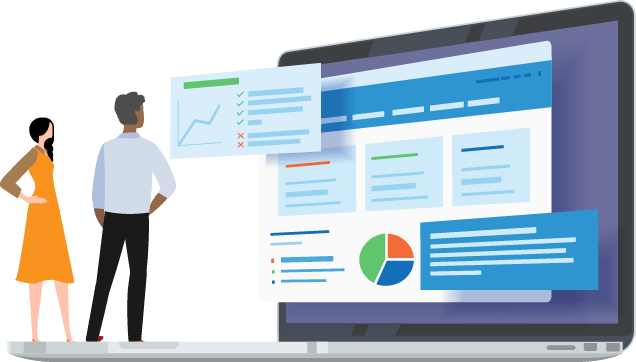What is Prescriptive Analytics?
- The Tech Platform

- Dec 10, 2020
- 4 min read
Prescriptive analytics is the area of business analytics (BA) dedicated to finding the best course of action for a given situation.
Prescriptive analytics is related to both descriptive and predictive analytics. While descriptive analytics aims to provide insight into what has happened and predictive analytics helps model and forecast what might happen, prescriptive analytics seeks to determine the best solution or outcome among various choices, given the known parameters.
Prescriptive analytics can also suggest decision options for how to take advantage of a future opportunity or mitigate a future risk, and illustrate the implications of each decision option. In practice, prescriptive analytics can continually and automatically process new data to improve the accuracy of predictions and provide better decision options.
A process-intensive task, the prescriptive approach analyzes potential decisions, the interactions between decisions, the influences that bear upon these decisions and the bearing all of the above has on an outcome to ultimately prescribe an optimal course of action in real time. Prescriptive analytics is not failproof, however, but is subject to the same distortions that can upend descriptive and predictive analytics, including data limitations and unaccounted-for external forces. The effectiveness of predictive analytics also depends on how well the decision model captures the impact of the decisions being analyzed.
Advancements in the speed of computing and the development of complex mathematical algorithms applied to the data sets have made prescriptive analysis possible. Specific techniques used in prescriptive analytics include optimization, simulation, game theory and decision-analysis methods.
A company called Ayata holds the trademark for the (capitalized) term Prescriptive Analytics. Ayata is the Sanskrit word for future.
How does prescriptive analytics work?
Generating automated decisions or recommendations requires specific and unique algorithmic models and clear direction from those utilizing the analytical technique. A recommendation cannot be generated without knowing what to look for or what problem is desired to be solved. In this way, prescriptive analytics begins with a problem.
Here’s an example: A Training Manager uses predictive analysis to discover that most learners without a particular skill will not complete the newly launched course. What could be done? Now prescriptive analytics can be of assistance on the matter and help determine options for action. Perhaps an algorithm can detect the learners who require that new course, but lack that particular skill, and send an automated recommendation that they take an additional training resource to acquire the missing skill.
The accuracy of a generated decision or recommendation, however, is only as good as the quality of data and the algorithmic models developed. What may work for one company’s training needs may not make sense when put into practice in another company’s training department. Models are generally recommended to be tailored for each unique situation and need.
Descriptive vs Predictive vs Prescriptive Analytics
Descriptive Analysis
The clue is in the name when it comes to descriptive analytics: they describe the state of your business. These solutions process large amounts of data and reconfigure it into easily-interpretable forms such as tables, charts or graphics. This information could be made up of any statistic, event, trend, or specific timeframe from your manufacturing past.
The aim of these types of analytics is to learn from the past. One common example is analyzing seasonal purchasing trends to determine the best time to launch a new product. As consumers are creatures of habit, looking at historical data is an effective way to predict their responses.
Descriptive analytics or statistics can demonstrate everything from total stock inventory to the progress of sales figures over the course of several years. They can show the typical amount customers spend and whether this sum is likely to increase at certain times. If diagnostic analytics are about the why, descriptive analytics explains the what.
Predictive and descriptive analytics have oppositional objectives, but they’re very closely related. This is because you need accurate information about the past to make predictions for the future. Predictive tools attempt to fill in gaps in the available data. If descriptive analytics answer the question, “what happened in the past,” predictive analytics answer the question, “what might happen in the future?”
Predictive Analysis
Predictive analytics take historical data from CRM, POS, HR, and ERP systems and use it to highlight patterns. Then, algorithms, statistical models and machine learning are employed to capture the correlations between targeted data sets.
The most common commercial example is a credit score. Banks uses historical information to predict whether or not a candidate is likely to keep up with payments. It works in much the same way for manufacturers, except that they’re usually trying to find out if products will sell. Predictive analytics focus on the future of the business.
Prescriptive Analytics
Of diagnostic, predictive, descriptive, and prescriptive analytics, the latter is the most recent addition to the business intelligence landscape. These tools enable companies to view potential decisions and, based on both current and historical data, follow them through to a likely outcome.
Like predictive analytics, prescriptive analytics won’t be right 100% of the time, because they work with estimates. However, they provide the best way of “seeing into the future” and determining the viability of decisions before they’re made.
The difference between the two is that prescriptive analytics offers opinions as to why a particular outcome is likely. They can then offer recommendations based on this information. To achieve this, they use algorithms, machine learning and computational modeling.
If predictive analytics answers, “What might happen?” then prescriptive analytics answers, “What do we have to do to make it happen?” or “How will this action change the outcome?” Prescriptive deals more with trial and error and has a bit of a hypothesis-testing nature to it.
Source: Whatls





Comments